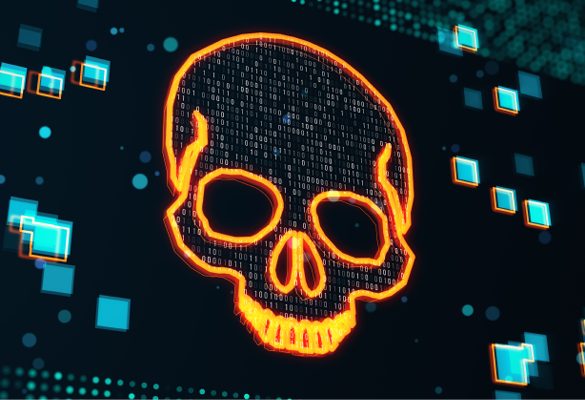
As Government IT modernization advances and interconnectivity initiatives expand, the need for cybersecurity solutions is more crucial than ever. Cyberattacks are on the rise across the Public Sector, which poses a significant risk to critical infrastructures, applications, networks and cloud environments.
Public sector agencies need cybersecurity tools to protect critical data at every endpoint. Carahsoft has established strategic, long-term relationships with the industry’s leading cybersecurity manufacturers to offer government entities proven, cost-effective protection for infrastructures, networks and assets.

Abnormal Security
5 Emerging Email Attacks to Watch For in 2024
The cybersecurity landscape is poised for significant evolution in 2024, marked by the emergence of new and refined threat vectors, as well as an increase in the tried and true attacks of the past. To help prepare organizations against them, we’ve gathered five specific attack types that we expect to increase in the coming year.

Abnormal Security
Bait and Switch: File-Sharing Phishing Attacks Surge 350% H2 2024
As the only universally adopted platform across every industry and region, email is a vital business communication channel. However, it also presents significant cybersecurity challenges, as it is inherently intrusted despite being inherently insecure. While real-time collaboration tools have skyrocketed in popularity, email remains the go-to channel for asynchronous communication. As our universal dependence on email is unlikely to end anytime soon, it will continue to be an attractive vehicle for cyberattacks.

Crowdstrike
2024 Global Threat Report
The CrowdStrike 2024 Global Threat Report sheds light on the standout trends from last year, how adversaries’ activities and motivations are evolving and the ways CrowdStrike anticipates the threat landscape will evolve in the coming year.

Crowdstrike
2024 Threat Hunting Report
The CrowdStrike 2024 Threat Hunting report highlights the trends the CrowdStrike OverWatch team has observed over the past 12 months and details how CrowdStrike OverWatch utilizes proactive, intelligence-informed threat hunting to relentlessly track, detect and ultimately disrupt the adversary no matter when or where they operate.

Delinea
Privileged Access Management for Government Agencies
As cyber threats increase in volume and sophistication, effective and agile privileged access management (PAM) is mission-critical for government agencies of every size. Learn how you can discover, manage, protect, and audit privileged account access across decentralized agency environments at scale.

Delinea
Expert’s Guide to Privileged Access Management (PAM) Success
80% of breaches involve compromised credentials, making privileged access management (PAM) a security priority for organizations of all types. In this guide, you’ll learn steps to becoming a PAM expert that help you balance the goals of securing access to privileged credentials and endpoints, enhancing productivity and minimizing costs.

HackerOne
Hacker – Powered Security Report
This 7th annual Hacker-Powered Security Report for Government goes deeper than ever before with insights from our customer network and from some of the world's top hackers. We also take a more comprehensive look at the top ten vulnerabilities and how government organizations are performing when it comes to incentivizing hackers to find the vulnerabilities that are most important to them.

HackerOne
The Ultimate Guide to Managing Ethical and Security Risks in AI
Artificial intelligence (AI) is swiftly revolutionizing software development and deployment across various sectors. As we edge closer to a future where AI is ubiquitous, it’s essential to consider its impact on various teams, including those focused on security, trust, and compliance. What challenges and risks do these teams encounter, and how can AI help solve endemic issues in these fields? This guide is designed to tackle these critical questions based on HackerOne’s experience and insights within the evolving AI landscape.

HID Global
Columbia County Sheriff Case Study
The Columbia County Sheriff’s Office has evolved its approach to protecting information by verifying the identities of everyone who accesses the network or the Agency’s computers. To boost its cyber security, the Sheriff’s Office partnered with a provider best known for physical access credentials, but now with a comprehensive digital identity portfolio: HID, a worldwide leader in trusted identity solutions. The result will prevent the theft and fraudulent use of Agency personnel digital identities.

HID Global
The Essential Guide to Enterprise SSL Management
It’s an unspoken rule of doing business today to have some form of online presence or a website where customers can obtain information about your product or services. To secure these transactions organizations need to use SSL certificates. Download this guide to learn how to choose the right enterprise TLS/SSL provider and certificate authority.

Ping Identity
FedRAMP and DoD IL5 Solutions for Government
As your agency shifts to telework and cloud computing, you experience firsthand the limitations of legacy ICAM tools. As you’re tasked to secure access for your increasingly remote workforce and support connectivity with mission partners and other organizations, you realize that outdated identity security technology just wasn’t designed for today’s threat landscape. Nor can it support the increasing number of FedRAMP authorized cloud service offerings you may be adopting. To address these new and evolving challenges, many agencies are moving towards a Zero Trust security posture. Learn how Ping Government Identity Cloud and Software Solutions can help.

Ping Identity
Bring Fragmented Identity Ecosystems Together with a Federation Hub
Legacy technologies and approaches to cybersecurity stall cross-agency collaboration – ultimately hindering the government’s ability to adequately respond to mission needs, citizen service priorities, or even national security emergencies – because they prohibit individual agencies from validating the digital identities of workers and mission partners from other agencies. Learn how a federation hub breaks down authentication silos and help your organization.
